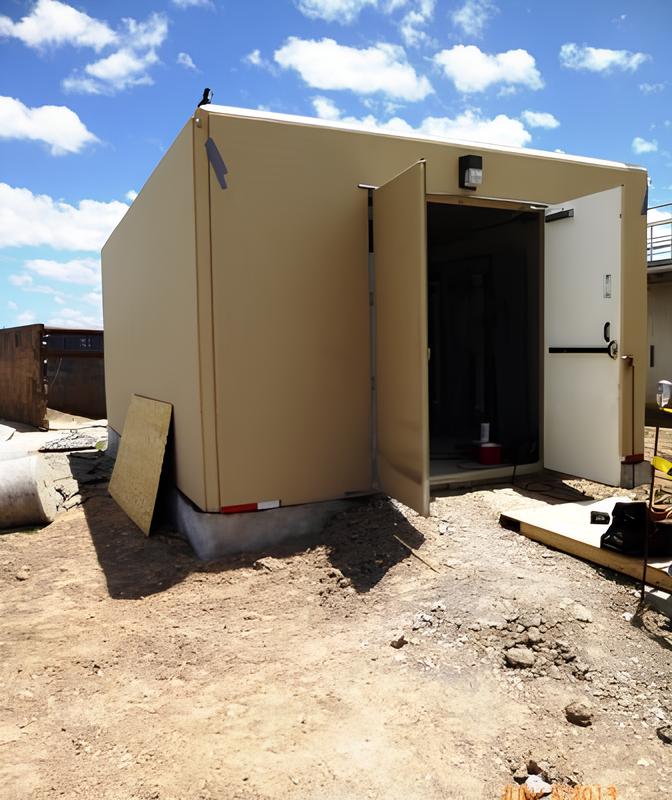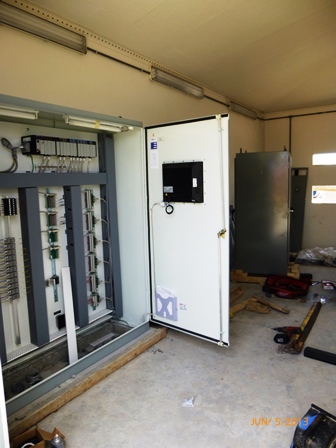Electrical Building Protects in Coastal Environment Case Study
Fiberglass Electrical Buildings Enhance Resilience and Efficiency in Wastewater Treatment Plant Expansion
The Brownsville Public Utilities Board underwent a major Wastewater Treatment Plant (WWTP) expansion and renovation project to support the growing wastewater treatment demands. The upgrade increased the plant's capacity from 10 million gallons per day (MGD) to 14.5 MGD, ensuring the facility can accommodate future population growth. Additional improvements included implementing a state-of-the-art ultraviolet (UV) disinfection system to reduce reliance on chemical disinfectants and constructing an odor control system with a filtration tower to mitigate community concerns about foul odors.
Protecting Electrical Equipment in a Coastal Environment
One component of the WWTP upgrade was providing separate housing for the electrical equipment that controls the new disinfection and filtration systems. Each system requires a controlled environment to prevent degradation from environmental factors and ensure equipment longevity. Given the plant's proximity to the Gulf Coast, any electrical building (eHouse) had to meet defined requirements for wind resistance, energy efficiency, and corrosion protection. The project originally specified concrete structures, but the design team opted for fiberglass-reinforced plastic (FRP) enclosures due to the advantages of a prefabricated solution and fiberglass's inherent corrosion resistance.

Custom-engineered eHouses Offer Resilience and Efficiency
Shelter Works custom-engineered and manufactured two 15'-10" x 24' x 10' fiberglass enclosures that easily met the project's durability and energy efficiency standards. Each enclosure incorporates key features to improve durability, ensuring protection from high winds and other environmental factors common to the Gulf Coast region.

Structural Reinforcement for Wind Resistance
- Increased insulation provides additional structural support.
- Wood reinforcement in the walls, roof, and doors for improved structural integrity.
- Reduced fastener spacing of 2" on center improves overall enclosure strength.
Advanced Climate Control and Corrosion Protection
- Each electrical building includes a 2-ton wall-mounted air conditioner with phenolic coating for added corrosion resistance.
- The 2" foam wall insulation and 2-1/2" foam ceiling insulation regulate internal temperatures, ensuring optimal equipment performance.
- Energy efficiency is validated by compliance with ASHRAE 90.1 (2004) and the International Energy Conservation Code (IECC – 2006), verified by a third-party engineering firm.
Why Choose Prefabricated Fiberglass?
The initial plan to use concrete structures presented challenges, including lengthy on-site construction timelines, high labor costs, and concerns about long-term maintenance in a coastal environment. Switching to FRP enclosures streamlined the project and provided significant advantages:
- Reduced Installation Time: Fiberglass electrical buildings are manufactured off-site and delivered ready for installation, minimizing on-site labor and construction disruptions.
- Lower Maintenance Costs: Unlike concrete, FRP does not crack, absorb moisture, or corrode, reducing the need for routine repairs.
- Superior Corrosion Resistance: Coastal conditions expose structures to humidity and salt air, accelerating material degradation. FRP's natural resistance to corrosion ensures longevity and reliability.
- Enhanced Energy Efficiency: High-performance insulation and HVAC optimization improve energy efficiency, aligning with the project's sustainability goals.
Fiberglass electrical buildings provide an ideal solution for wastewater treatment plants and similar industrial facilities in demanding coastal environments. They deliver the structural strength required for storm resilience while offering superior insulation, lower maintenance requirements, and faster deployment than traditional concrete buildings. By choosing FRP eHouses, the Brownsville WWTP expansion project achieved greater efficiency, cost savings, and long-term protection for its critical electrical infrastructure.

